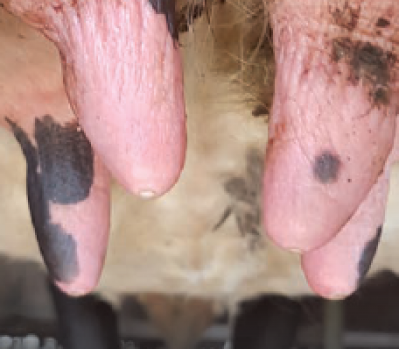
Seasonal Focus: Mastitis and Milk Quality
Read more about our milk quality program for farmers focusing on the areas of improving teat health, find the bug and use the right drug, and actively managing high SCC cows.
Description
Producing more milk of higher quality using the gold standard
Managing mastitis has evolved over the years. In the 1960’s we started with the 5-point plan. This evolved in the 1990’s to the SAMM plan (Seasonal Approach to Manage Mastitis) and then in the 2000’s into SmartSamm where the focus shifted to improving teat health.
However, a lot has changed in the last 5 years, including:
- Dairy processors now offer payment premiums for quality milk
- Concerns around antibiotic resistance have put a spotlight on judicious antibiotic use for mastitis – especially dry cow therapy
- A global focus to reduce on-farm emissions includes a focus on improving cow efficiency including minimising the wastage from mastitis
- On-farm diagnostics for mastitis are now at every farmer’s finger tips
- The use of pain-relief anti-inflammatory treatments is recognised as part of good animal care
So where is the future taking us? How can we produce more milk of higher quality and what’s the Gold Standard to get there? At AgriHealth we see it as taking the best of the old and bringing in the new! This includes:
Improving Teat Health
Scoring teat skin condition, teat end health and teat spray coverage of 50 cows at key times through the season is the best way to understand the interaction between the bacteria, the environment, the milking machine and milking practices. AgriHealth have developed TeatCheck for vets to record the teat score results and identify areas for improved mastitis management as well as the “Ready to Milk” program for vets to perform a detailed milking time assessment and create a mastitis management action plan specific to each farm. Talk to your vets about teat scoring your herd.
Find the bug, Use the right drug
On farm testing such as Mastatest allows farmers to test every clinical mastitis case, wait 24 hours for the result and only using antibiotics if indicated. Knowing what bacteria is involved and what drug to use results in better cure rates while reducing overall antibiotic use. Treating every case with pain relief anti-inflammatories (such as 3 days of KetoMax) improves cow welfare and helps cows get back into production earlier.
For more information on cow care including NSAID pain relief please click here
Actively Manage High SCC cows
The best way to keep “Clean Cows Clean” is to identify and manage problem high SCC cows. Using the Mastatest HiSCC cartridge to test RMT positive cows at the 8th milking in the colostrum mob and the top 20 cows at each herd test, problem Staph. aureus positive cows can be identified and managed (e.g. milked last) to prevent the spread of infection.
Make better decisions during lactation and at drying off
Use individual cow SCC results from 4 herd tests plus diagnostic test results above to make the best selective dry cow and culling decisions. The season can be rounded off with farm staff training using the Managing Mastitis poster – talk to your vet about training for your team.
By actively adopting the four steps above, we can produce more milk of higher quality.

Please contact your local AgriHealth representative to order A3 farmer posters, and for additional resources including social media tiles, images, and/or to schedule training for your vet and tech team.